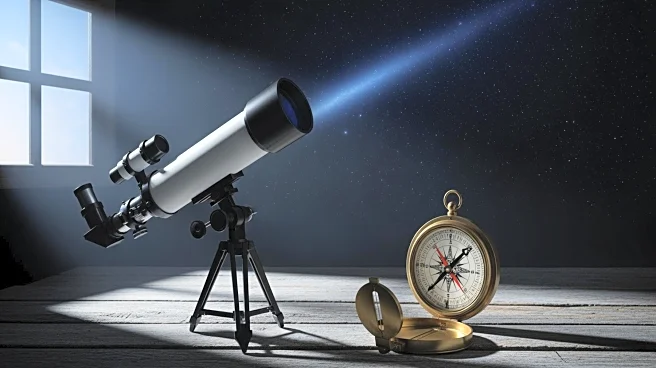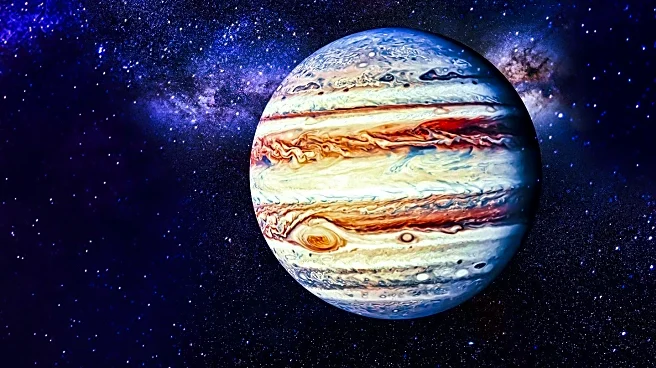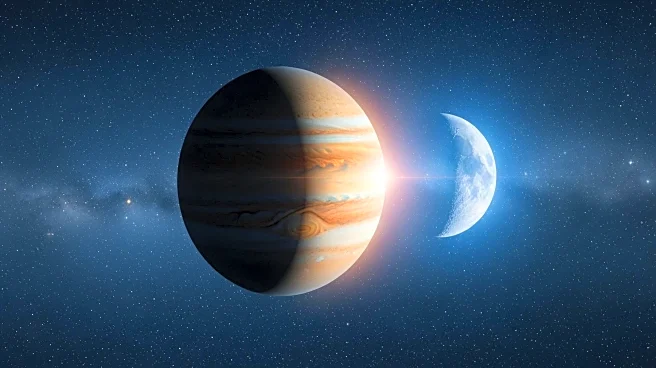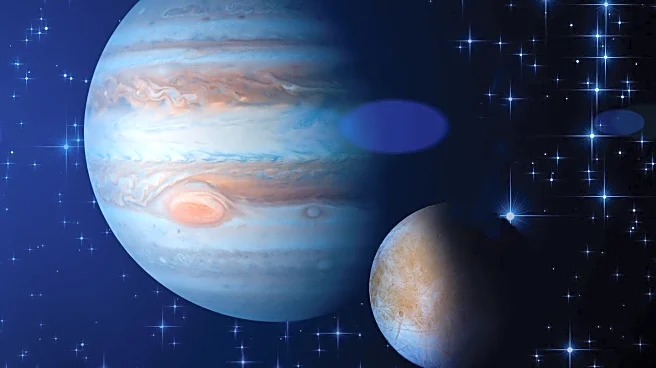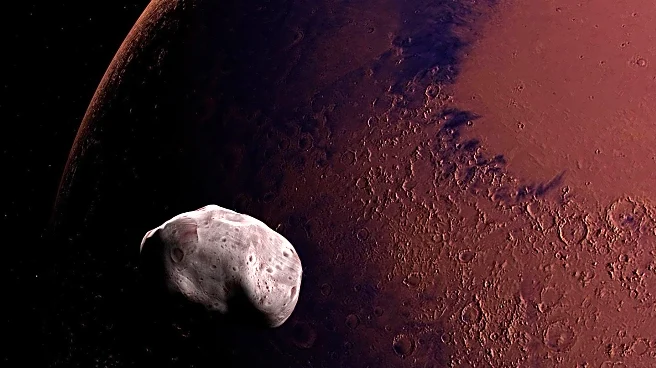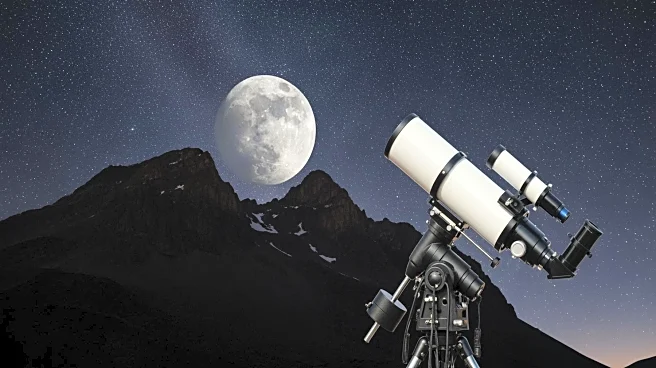What's Happening?
On November 8, Mercury ceased its easterly motion and began moving retrograde, or westward, relative to the background stars. This astronomical event is observable shortly after sunset near Antares in the Scorpius
constellation. Mars is also visible in proximity to Mercury, displaying similar brightness to Antares. The gibbous Moon will rise near Jupiter around 9 P.M. local time, offering a viewing opportunity for observers.
Why It's Important?
Mercury's retrograde movement is a significant event for astronomers and sky watchers, providing an opportunity to observe planetary motion and celestial alignments. This event may influence astronomical studies and public interest in stargazing. The visibility of Mars and the Moon alongside Mercury enhances the observational experience, contributing to educational and recreational activities.
What's Next?
Observers can continue to track Mercury's retrograde path and its interactions with other celestial bodies. Future astronomical events may offer additional opportunities for observation and study. The alignment of planets and stars may inspire further research and public engagement in astronomy.
Beyond the Headlines
The event highlights the dynamic nature of celestial movements and the importance of astronomy in understanding the Universe. It may encourage discussions on the cultural and historical significance of planetary alignments.



